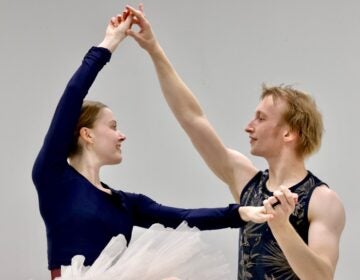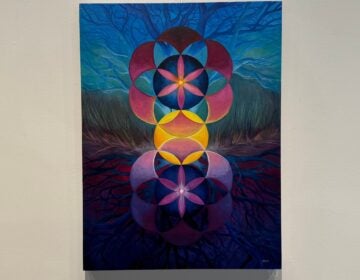‘She has the same hair as me’: In Wilmington, barrier-breaking ballet star Misty Copeland inspires young dancers
As the first Black principal dancer at the American Ballet Theatre, Copeland shared her insights for young dancers hoping to follow in her footsteps.
Listen 1:25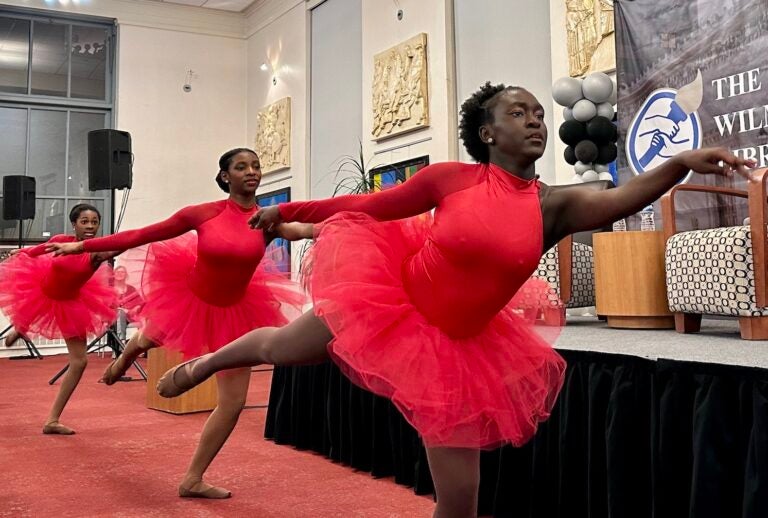
Kicking off the event, three dancers from Pieces of a Dream Academy of Dance presented a ballet routine. (Johnny Perez-Gonzalez/WHYY)
From Philly and the Pa. suburbs to South Jersey and Delaware, what would you like WHYY News to cover? Let us know!
Over 300 Misty Copeland fans stood in drizzling rain Tuesday night as the line to get into her appearance at the Wilmington Public Library wrapped around the building. About half were able to get into the library for the latest event as part of its Black History Month speaker series. Some fans who couldn’t get in stayed outside in the wet weather, watching Copeland through the library’s windows.
Inside, Copeland spoke of how she discovered her love for dance unexpectedly as a 13-year-old, never imagining it would lead to a fulfilling career. She pointed to Raven Wilkinson, one of the first African American ballerinas to shine in a major ballet company, as her most influential figure. She also highlighted others who inspired her journey, like dancer and actor Victoria Rowell.
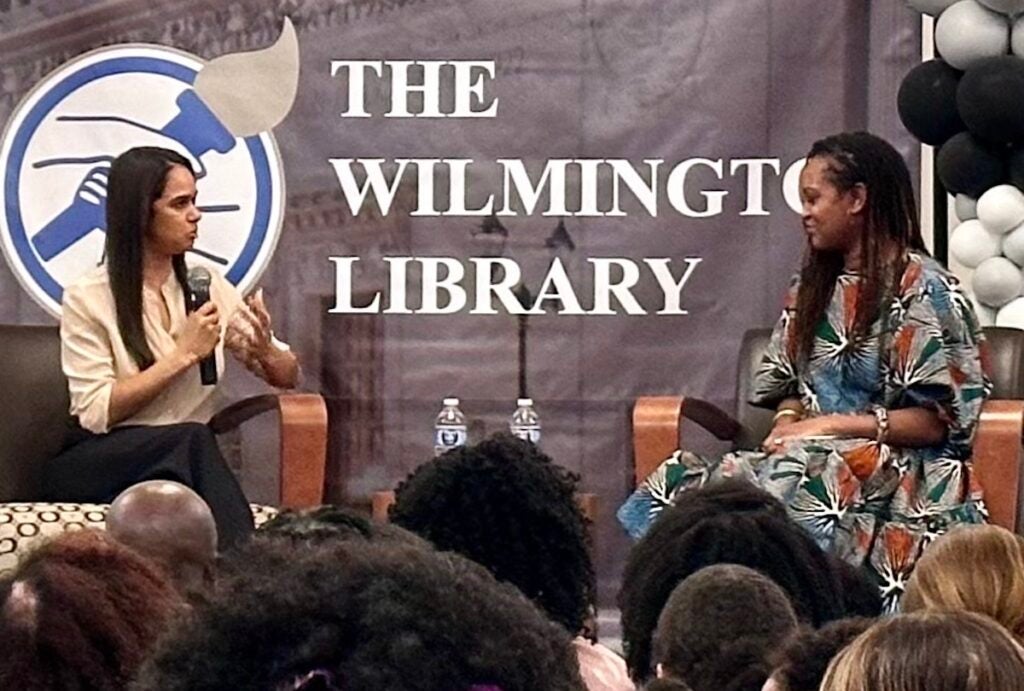
Now, Copeland is providing the inspiration as the first Black female principal dancer at the prestigious American Ballet Theatre.
“She has the same hair as me,” said 8-year-old dancer Savannah Fassette, who joined the crowd along with her mother.
Copeland told the Wilmington crowd it wasn’t an easy journey. She encouraged young people hoping to pursue a career in dance, like Fassette, to understand the importance of embracing guidance from mentors.
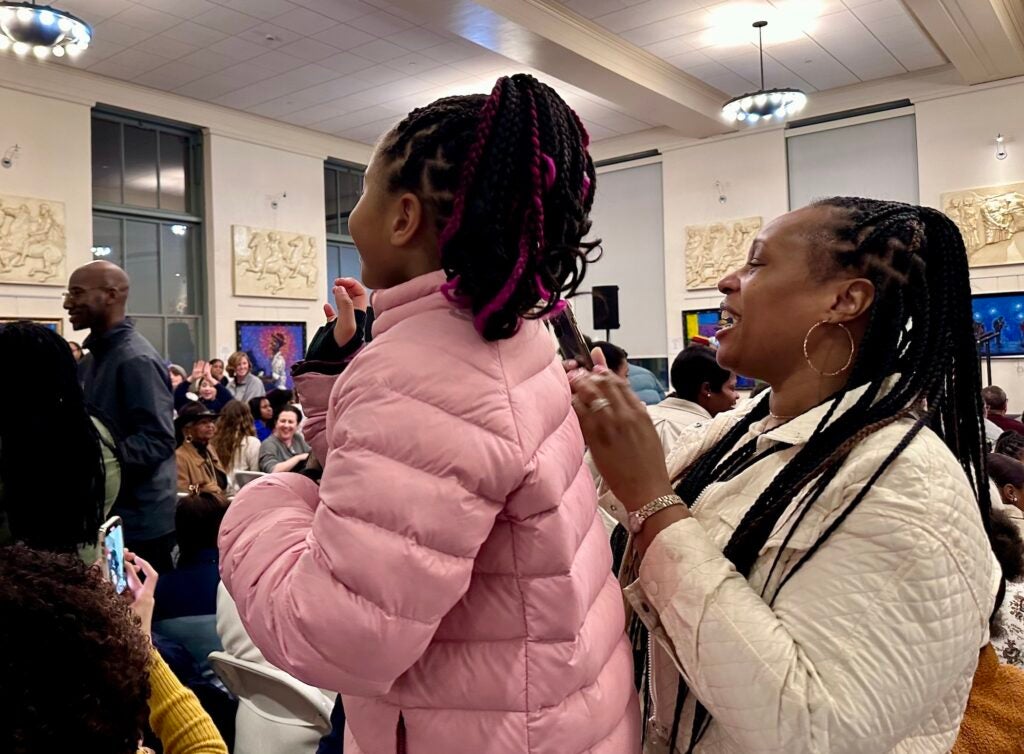
“Looking at yourself, kind of assessing, being transparent and honest, are you ready for this? Are you willing to have someone come into your life and really guide you and take advice? I feel like Victoria really opened that for me,” she said. “I think it’s really important to acknowledge whether or not you’re ready to be open to having this type of guidance and accept advising.”
She said mentorship plays a particularly significant role for dancers of color.
Despite drizzling rain, 300 fans lined up around Wilmington Public library to see Misty Copeland.@mistyonpointe, the first Black female principal dancer at the prestigious American Ballet Theater shares her insights to young dancers… pic.twitter.com/bko29bmXui
— Johnny Perez (@johnnyperez__) February 28, 2024
Body size is intensely focused on in the dance world, especially in ballet. Throughout her career, Copeland faced criticism for being labeled too muscular or big to excel in ballet.
“When it comes to being a Black woman and having been told certain things about my body, you know for me, it’s really been again having open dialogue with mentors and people that I trust in my life and being able to really process the things that are being said to me,” she said. “Those words are different for a Black woman, you know, and when people meet me and they’re like, ‘Oh, you’re really petite. I don’t understand what the big deal is’ and I’m like, ‘yeah, I don’t either.’”
She also pointed to disparities in appearance, such as differences in skin color and hair texture.
“When it comes to those small details of like ’Well, you need to work on your turnout or with your port de bras,’ or you know, ‘You need to be faster in your footwork,’ those are all reasonable criticisms,” she said. “But when it comes to something like the color of your skin or the shape of your body or how tall you are, you can’t get your hair to go in this style the way I want it to. It’s like, ‘Okay, well, give me something I can really work on.”
“It’s a real problem,” she added.
She aims to foster change by advocating for more representation in ballet, guiding Black dancers on hairstyling for performances and ensuring access to pointe shoes matching their skin color.
‘Pancaking it’s a tradition, it’s a method’
In ballet, the accessibility of darker-colored ballet slippers is limited. To overcome this challenge, Copeland used the pancaking method by coloring in her ballet slippers.
“Pancaking is a tradition, it’s a method. It’s something that dancers of color have been doing from the beginning of time, when ballet was created, because ballet slippers, tights, pointe shoes are not offered to us in our skin color,” Copeland said. “Throughout history, the standard color is called European pink because it was made and created for European white people. And I think that’s something that needs to shift and change because ballet, everyone does it.”
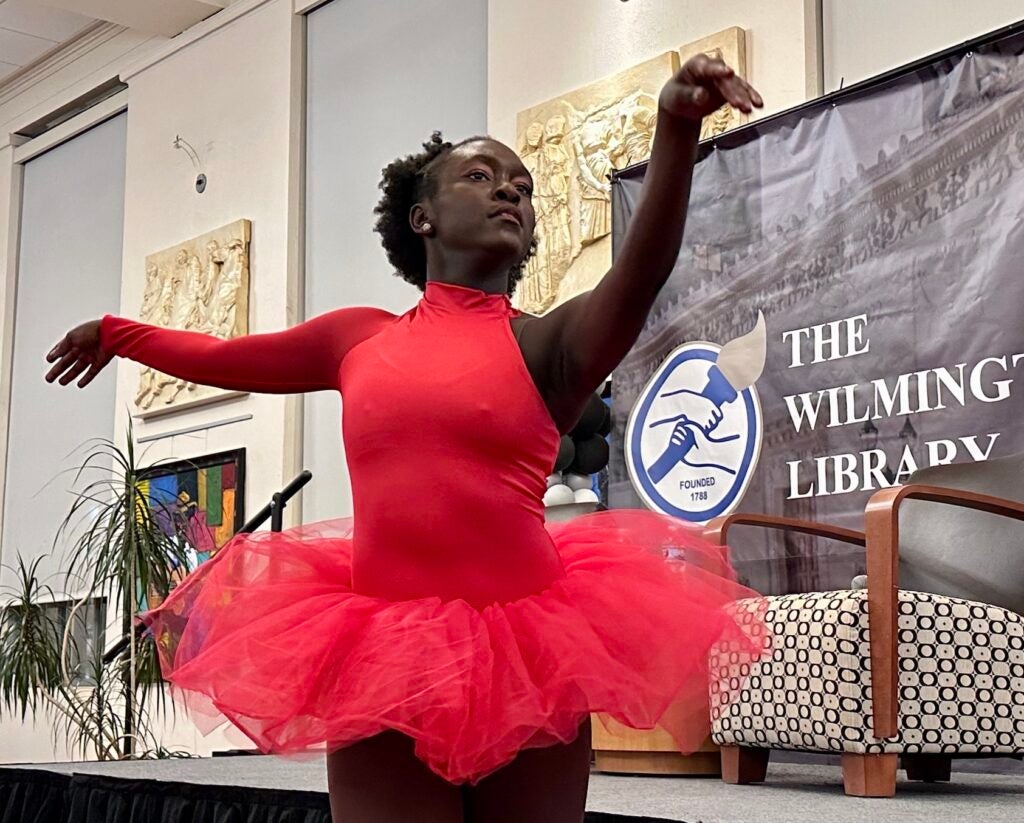
“It’s now an American art form and so it’s something that really needs to reflect the people that want to be a part of it and that are participating,” she added.
She explained that a white dancer wearing pink tights and pointe shoes or ballet slippers creates a “beautiful” through line — an aesthetic continuity. Dancers of color, Copeland noted, desire the same feeling, but the lack of supplies that match the rest of their body limits their ability to achieve this aesthetic.
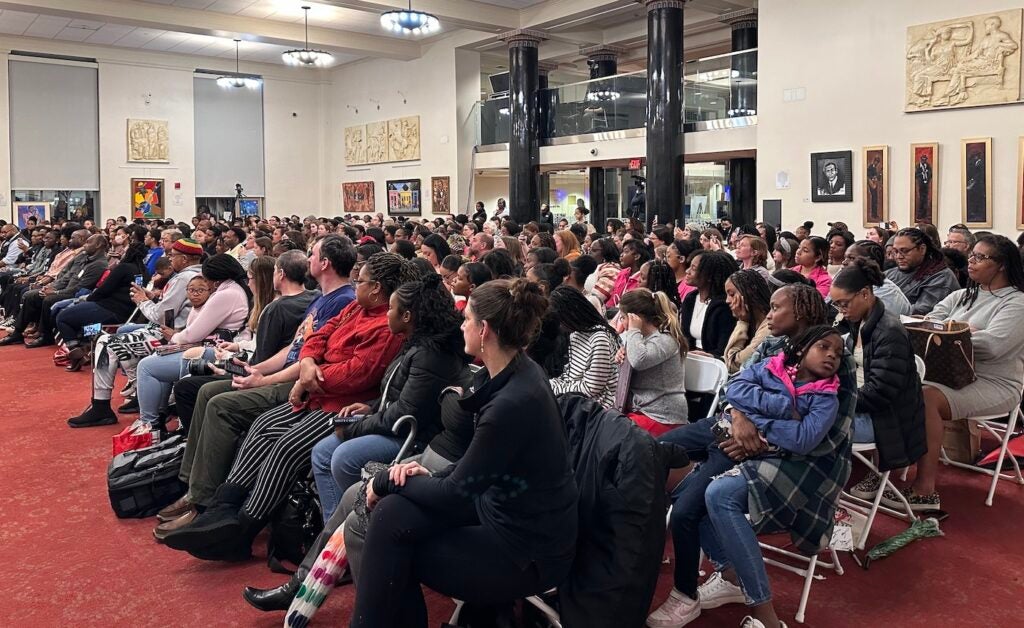
The diverse audience included youngsters and older adults, with many Wilmingtonians and people who traveled from distant areas. The Q&A session was full of questions from young dancers, which spanned topics like racism in dance, support for boys who do ballet and managing criticism related to body image.
Copeland ended her remarks by encouraging communities of color to continue fighting for equity in the dance industry and advocating for change despite the tough conversations that might involve.

Get daily updates from WHYY News!
WHYY is your source for fact-based, in-depth journalism and information. As a nonprofit organization, we rely on financial support from readers like you. Please give today.




